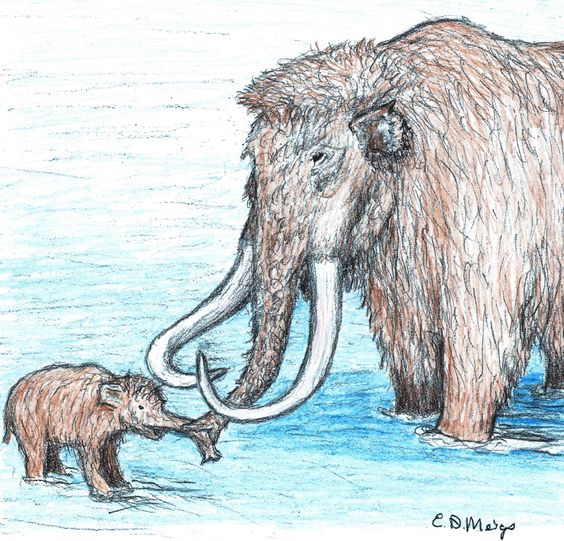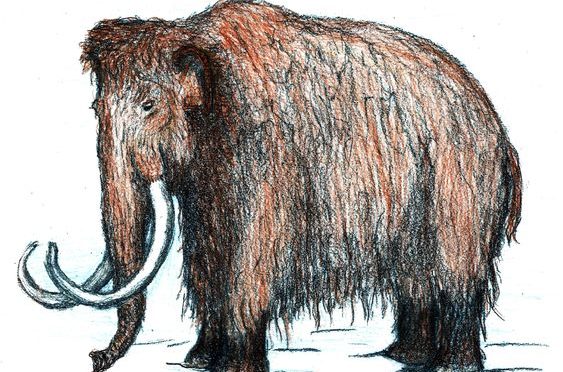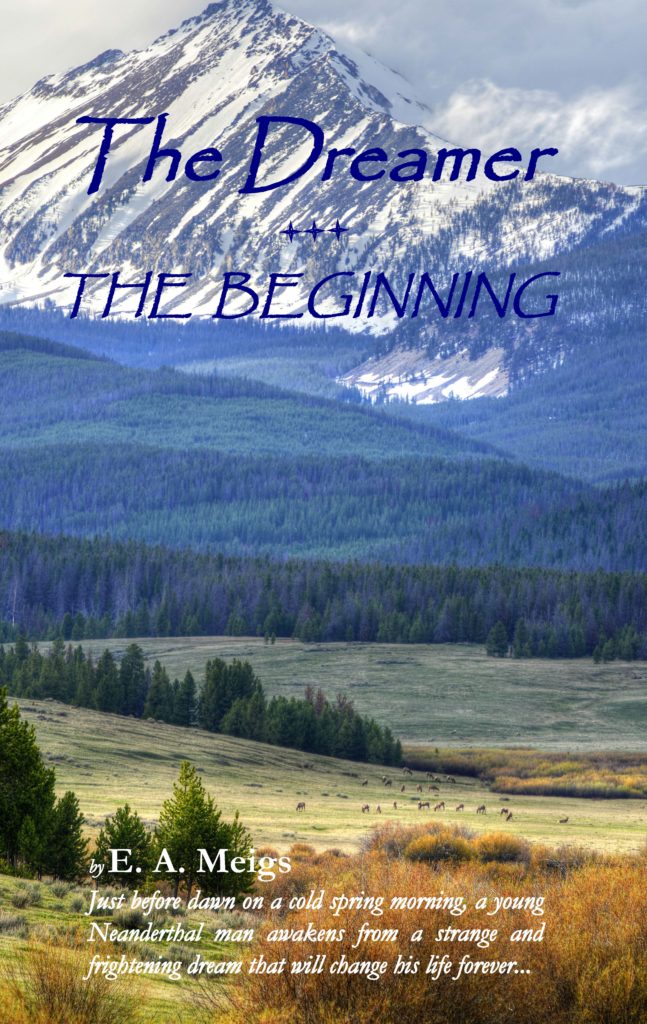
The Woolly mammoth was a large animal that lived in Eurasia and North America. It was similar in size to today’s African elephants, but with considerably longer tusks, a shorter tail, and much smaller ears. The bulls could be up to 11 feet high at the withers and weigh over 12,000 pounds. Cows were somewhat smaller, but still impressive in size at up to 9 1/2 feet at the withers and weights of up to 9000 pounds. Their furry hides came in a wide range of colors from blond to brown. Individual strands of the outer guard hairs could be as much as 42″ long.
Most mammoths are believed to have gone extinct near the end of the last Ice Age, approximately 10,000 ago, but some are thought to have eked out an existence on Wrangle Island until about 4000 years ago.
(Illustrations from The Dreamer Book Series: An Ice Age Saga, by E. A. Meigs.)


